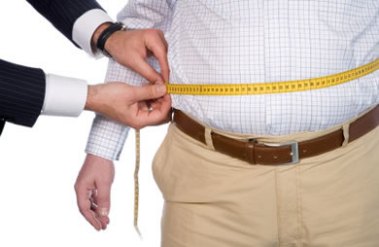obesity
Obesity-diet soda paradox
– Posted by Pillscribe
Usually, calorie-conscious people go for diet sodas as beverage, given an option. Diet beverages help to reduce calorie intake. These zero calorie drinks’ effectiveness as a tool in overall weight-management plan have been repeatedly endorsed by several studies.
However, new research shows that diet colas can work the other way round, as well. Diet drinks can make people eat more thereby ending up consuming more calories, according to a study by the Johns Hopkins University Bloomberg School of Public Health.
Obese people with the habit of drinking diet soda actually consume more daily calories from food, the study found. The U.S. National Heart, Lung, and Blood Institute-funded study used information from the 1999 to 2010 National Health and Nutrition Examination Survey.
After analysing the national patterns in diet-beverage habits, sugary-drink consumption and caloric intake by body-weight category, the researchers found that 11 percent of normal-weight, 19 percent of overweight and 22 percent of obese adults in US drink diet beverages.
Overweight people fond of diet beverages took in 88 more calories a day from solid food than those who drank sugary beverages. Meanwhile, obese participants who drank diet drinks consumed nearly 200 more calories a day from food than obese men and women who drank sugary drinks. Meanwhile, the normal-weight adults who drank diet soda got 73 fewer daily calories from food, while the normal-weight people who drank sugary drinks added 46 calories a day from food.
“Diet-soda drinkers who are overweight or obese are eating more solid food during the day than overweight and obese people who drink sugary beverages,” said study researcher Sara Bleich, associate professor of health policy and management at the Johns Hopkins.
But why do diet soda-savvy heavy people tend to eat more? Maybe the answer lies with the artificial sweeteners used to flavour diet drinks, Bleich said. Earlier studies have reported that artificial sweeteners disrupt the brain’s sweet sensors and give the feeling of less satiated. The feeling that the tummy is not full make one eat more food.
Many experts and the American Beverage Association, the trade group representing soda manufacturers, dispute the findings of the study.
Eat slowly to cut flab?
– Posted By Pillscribe
As children (or even as grown-ups), we have been told many a time that food should be taken in slowly. Hurrying with food could be dangerous as there is always a chance that food particles get lurked in the wind pipe. Therefore, everyone needs to have food more leisurely, relishing each and every item and spending enough time to chew it properly before downing.
The age-old practice of slow eating seems to have been accepted to be sacrosanct principle in the modern scientific age, as well. This is especially so for those who want to shed some excess weight.
People who consume food slowly could significantly curb their calorie intake and thereby mitigating the risk of getting obese, shows a recent study published in the Journal of the Academy of Nutrition and Dietetics.
The researchers carried out the experiment in a small group of people, which was a mix of both normal-weight and obese or overweight participants. All of them were given an opportunity to eat a meal under relaxed and then in a fast-speed environment. The slow meal was spread over an average of 22 minutes per meal. The average fast-meal time was about nine minutes.
Naturally, all participants consumed less food when eating slowly. But after eating a slow meal they felt less hungry compared to a fast meal.
Significantly, only the normal weight people actually reduced their calorie intake significantly when eating more slowly. They were found to consume 88 fewer calories when eating slowly. By contrast, the overweight group had only a 58-calorie reduction during the slow-eating session.
Overall, the obese/overweight group actually consumed less food during both the sessions than the normal-weight group.
“One possible reason [for the calorie drop seen] may be that slower eating allows people to better sense their feelings of hunger and fullness,” said Meena Shah, a professor in the department of kinesiology at Texas Christian University, in Fort Worth and the study author.
10 Healthy weight loss tips
-Posted by Preethi Rahul, Nutrition Consultant, HEAL Foundation
The festive season is round the corner, and most of us are battling against our sweet temptations on one hand, and the growing paunch on the other. Globally, 1 in 6 adults are obese and the incidence of obesity has doubled since 1980. Gaining a few kilos occasionally is not frightening but drastic weight gain is something which should not be ignored.
Here are 10 weight loss tips that will help in curbing the flab and keeping you fit.
- Have a hearty, nourishing breakfast everyday
- Do not fast or feast
- Variety is the need of the hour – include whole grains, veggies, fruits, nuts, cereals, pulses, meat and lean meat products, dairy (skimmed) to get a healthy blend of all the nutrients
- Limit the intake of white culprits like sugar, salt, dressings and refined flour (maida)
- Limit liquid calories like fruit juices, sugary soft drinks, alcohol, etc.
- Watch your portion size. Eat a variety of foods but ensure portion sizes are controlled
- Indian snacks are major culprits that cause the bulge. Choose healthier snacks like popcorn without the extra butter and salt, puffed rice, sprouts bhel, crunchy vegetables/fruits, etc.
- Exercise regularly. Choose an activity which you would enjoy doing to keep you motivated
- Keep yourself hydrated. Drink at least 8 to 10 glasses of water in a day. You can also have healthy drinks like buttermilk, coconut water, green tea, clear soups, etc.
- Give in to your cravings once in a while. A weekly treat with a bar of chocolate or a slice of pizza or one plate of your favorite pani-puri should do the trick.
Weight loss is not magic. Diligently following a balanced diet along with regular exercise and lifestyle modification can help in healthy weight reduction.
Eat to live. Do not live to eat!
Vitamin E offers hope as fatty liver disease cripples more US kids
– Posted by Pillscribe
A recent study found that obese teens in US are more receptive to TV fast food ads. Given the concerning rates of obesity in U.S. youth and associated health risks, there is no wonder if one every ten kids have fatty livers.
More than 7 million children in US are suffering from fatty liver disease. Health experts are really worried about this trend, because fatty liver disease used to be a condition more common in adults and associated with alcohol consumption.
“This is just really worrisome to have this number of children who have a disease this severe,” said Miriam Vos, a pediatrics professor at Emory University School of Medicine who studies and treats kids with fatty liver disease.
Dr Vos’ apprehension is primarily based on the fact that the condition can progress into a more lethal form of liver disease called nonalcoholic steatohepatitis (NASH).That can lead to end stage cirrhosis and eventual liver failure. About 10% of people with fatty liver disease will develop NASH and another 15% to 20% of those will get cirrhosis. Cirrhosis is not a reversible condition.
Fatty liver disease is directly linked to obesity even though genetics and other environmental factors can also a play a role. As much as about 40% of obese children have the disease. The disease appears to be growing among normal-weight children too.
The disease is usually symptomless at the beginning. A key indicator of fatty liver disease, however, is elevated liver enzymes.
New literature focusing on the role of specific nutrients in the diet that might cause the disease has identified one culprit: fructose.
Fructose is the common type of sugar found as a major ingredient found in corn syrup and fruit juice, which are widely consumed in western diets.
There is no definitive cure for fatty liver disease. It can be managed through weight loss, diet and exercise.
Significantly, vitamin E has been found to have some help in battling the condition. Eggs and some leafy vegetables like spinach are rich sources of the nutrient. Vitamin E helps to reduce inflammation in adults and children with NASH, researchers say.



